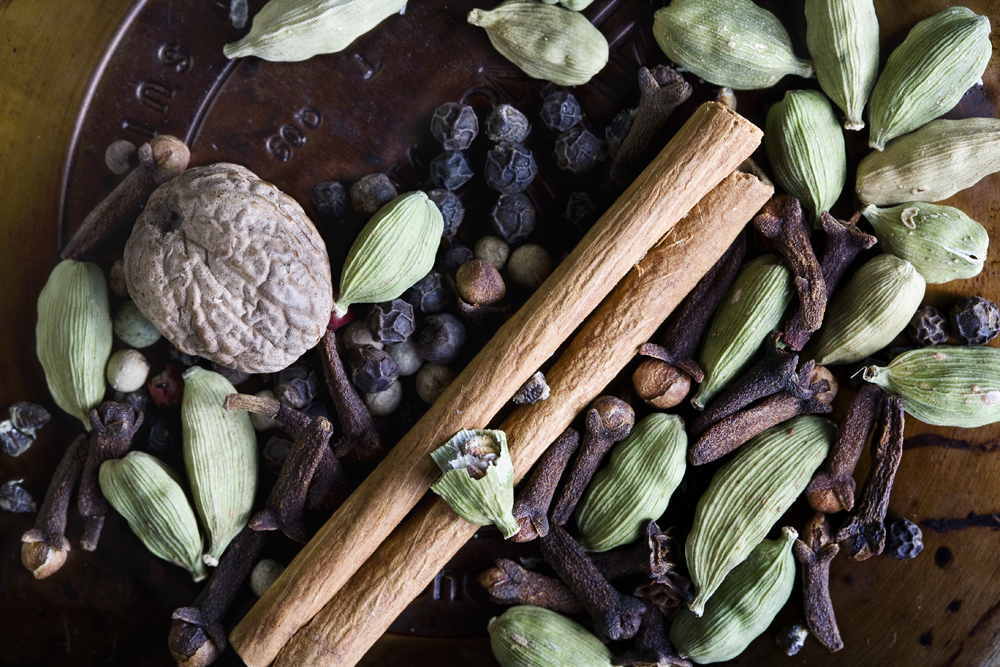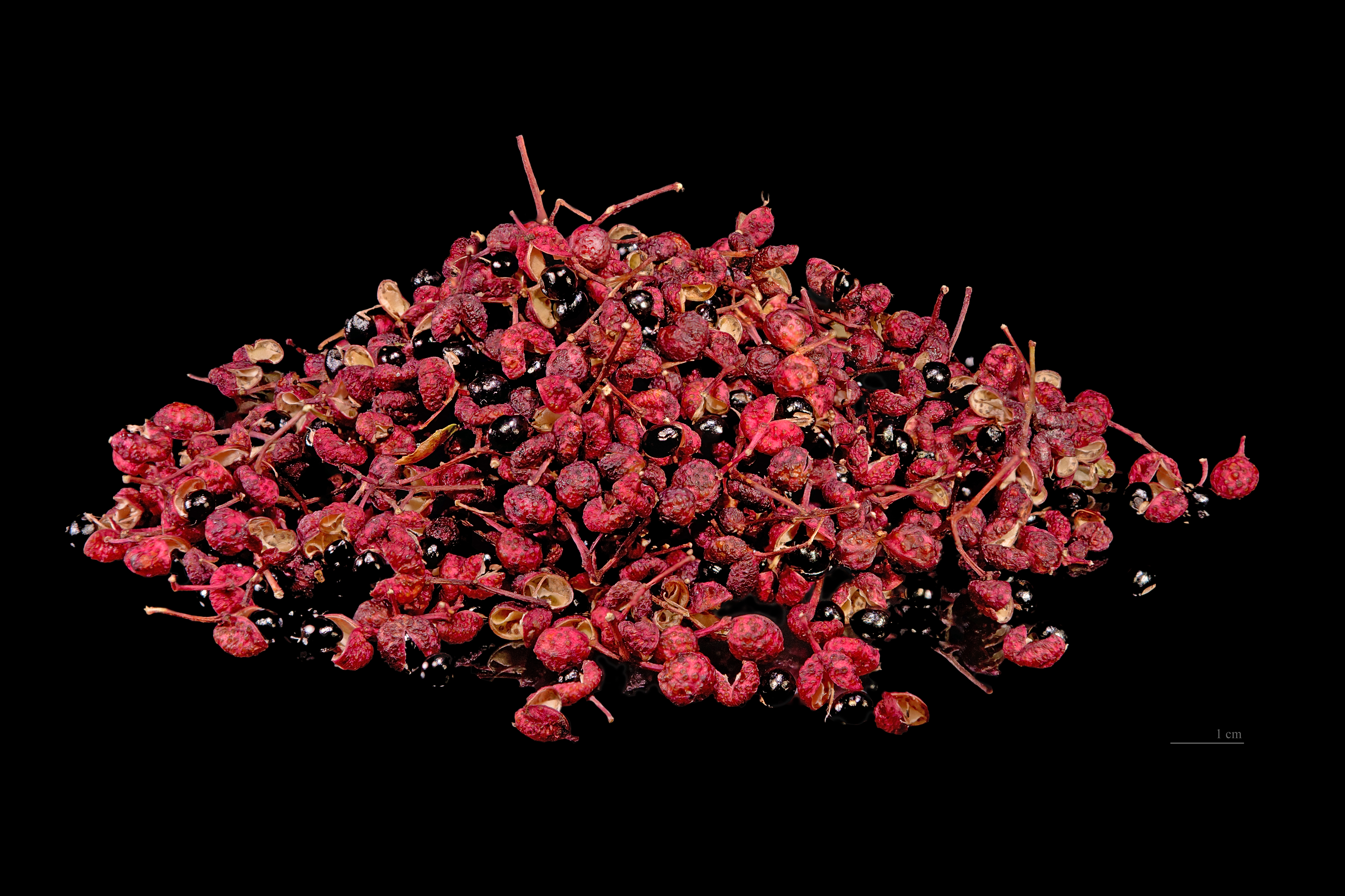|
Shichimi
, also known as or simply ''shichimi'', is a common Japanese spice mixture containing seven ingredients. Tōgarashi is the Japanese name for ''Capsicum annuum'', a red pepper native to Central and South America, and it is this ingredient that makes shichimi spicy. About A typical blend may contain: * coarsely ground red chili pepper (the main ingredient) * ground sanshō ("Japanese pepper") * roasted orange peel ( Chenpi) * black sesame seed * white sesame seed * hemp seed * ground ginger * ''nori'' or ''aonori'' (seaweed) * poppy seed Some recipes may substitute or supplement these with yuzu peel, rapeseed or shiso. Shichimi is distinguished from , which is simply ground red chili pepper. It is often consumed with soups and on noodles and gyūdon. Some rice products such as rice cakes, agemochi and roasted rice crackers also use it for seasoning. History Shichimi dates back at least to the 17th century, when it was produced by herb dealers in Edo, current day Tok ... [...More Info...] [...Related Items...] OR: [Wikipedia] [Google] [Baidu] |
List Of Condiments
A condiment is a supplemental food (such as a sauce or powder) that is added to some foods to impart a particular flavor, enhance their flavor, or, in some cultures, to complement the dish, but that cannot stand alone as a dish. The term ''condiment'' originally described pickled or preserved foods, but has shifted in meaning over time to include other small packaged goods such as coffee and tea. Many diverse condiments exist in various countries, regions and cultures. This list includes notable worldwide condiments. Condiments * * * * * * * * * * * * * * * * * * * * * * * * * * * *Disodium inosinate - umami paste ** * ** * ** * * , jams, and jellies * * * * * ** ** ** * Harissa - North African paste of roasted red peppers, hot peppers, spices, oil, and other flavor ingredients * * * * * * * * * * * ** ** ** * * * * * * * * * * * Mashed Potatoes * * * * * * * * * * ** ** ** ** ** ** ... [...More Info...] [...Related Items...] OR: [Wikipedia] [Google] [Baidu] |
Chenpi
Chenpi, chen pi, or chimpi is sun-dried mandarin orange peel used as a traditional seasoning in Chinese cooking and traditional medicine. It is aged by storing them dry. The taste is first slightly sweet, but the aftertaste is pungent and bitter. According to Chinese herbology, its attribute is warm. Chenpi has a common name, ‘ju pi’ or mandarin orange peel. Chenpi contains volatile oils which include the chemical compounds nobiletin, hesperidin, neohesperidin, tangeridin, citromitin, synephrine, carotene, cryptoxanthin, inositol, vitamin B1, and vitamin C. Traditional Chinese herbal medicine uses the alcohol extracts of several citrus peels, including those extracted from mandarin orange and bitter orange. Identification Since the products produced in Xinhui are purported to be the best quality, it is often called Xinhui Pi or Guang Chen Pi. It is normally cut into shreds before serving and presenting in the raw form. History The practice of using citrus peels ... [...More Info...] [...Related Items...] OR: [Wikipedia] [Google] [Baidu] |
Japanese Cuisine
Japanese cuisine encompasses the regional and traditional foods of Japan, which have developed through centuries of political, economic, and social changes. The traditional cuisine of Japan (Japanese: ) is based on rice with miso soup and other dishes; there is an emphasis on seasonal ingredients. Side dishes often consist of fish, pickled vegetables, and vegetables cooked in broth. Seafood is common, often grilled, but also served raw as sashimi or in sushi. Seafood and vegetables are also deep-fried in a light batter, as '. Apart from rice, a staple includes noodles, such as soba and udon. Japan also has many simmered dishes, such as fish products in broth called , or beef in and . Historically influenced by Chinese cuisine, Japanese cuisine has also opened up to influence from Western cuisines in the modern era. Dishes inspired by foreign food—in particular Chinese food—like ramen and , as well as foods like spaghetti, curry and hamburgers, have been adapted to ... [...More Info...] [...Related Items...] OR: [Wikipedia] [Google] [Baidu] |
Aonori
Green laver (), known as ''aonori'' (; ) in Japan, ''sea cabbage'' () or ''hutai'' () in China, and ''parae'' () in Korean, is a type of edible green seaweed, including species from the genera ''Monostroma'' and ''Ulva'' (''Ulva prolifera'', ''Ulva pertusa'', '' Ulva intestinalis''). It is commercially cultivated in some bay areas in Japan, Korea, and Taiwan, such as Ise Bay. It is rich in minerals such as calcium, magnesium, lithium, vitamins, and amino acids such as methionine. It is also called ''aosa'' (アオサ, ''Ulva pertusa'') in some places in Japan. Similar edible seaweeds, with indigenous names translated as "laver", are found in many other countries around the world. ''Porphyra umbilicalis'', a red seaweed, is harvested from the coasts of Scotland, Wales and Ireland. (See laverbread.) In Hawaii, "the species '' Porphyra atropurpurea'' is considered a great delicacy, called ". Culinary use Japan It is used in its dried form for Japanese soups, ''tempura'', and m ... [...More Info...] [...Related Items...] OR: [Wikipedia] [Google] [Baidu] |
Spice Mixture
Spice mixes are blended spices or herbs. When a certain combination of herbs or spices is called for in a recipe, it is convenient to blend these ingredients beforehand. Blends such as chili powder, curry powder, herbes de Provence, garlic salt, and other seasoned salts are traditionally sold pre-made by grocers, and sometimes baking blends such as pumpkin pie spice are also available. These spice mixes are also easily made by the home cook for later use. Masala Masala (from Hindi/ Urdu ''masalah'', based on Arabic ''masalih''). is a term from the Indian subcontinent for a spice mix. A masala can be either a combination of dried (and usually dry-roasted) spices, or a paste (such as vindaloo masala) made from a mixture of spices and other ingredients—often garlic, ginger, onions, chilli paste and tomato. Masalas are used extensively in Indian cuisine to add spice and flavour, most familiarly to Western cuisine in chicken tikka masala and chicken curry, or in masala c ... [...More Info...] [...Related Items...] OR: [Wikipedia] [Google] [Baidu] |
Agemochi
is a popular Japanese snack food made from fried ''mochi'' (sticky rice). The dry ''mochi'' is broken into small pieces, about 1 cm cubed, and deep fried. The pieces then puff up. It is usually eaten lightly salted, but also various flavoured versions are made, such as ''shichimi agemochi'', which is ''agemochi'' covered with ''shichimi , also known as or simply ''shichimi'', is a common Japanese spice mixture containing seven ingredients. Tōgarashi is the Japanese name for ''Capsicum annuum'', a red pepper native to Central and South America, and it is this ingredient tha ...'' seasoning. ''Agemochi'' can be purchased over most of Japan, and is also a common home-made snack. References Japanese snack food Japanese rice dishes {{Japan-cuisine-stub ... [...More Info...] [...Related Items...] OR: [Wikipedia] [Google] [Baidu] |
Zanthoxylum Piperitum
''Zanthoxylum piperitum'', also known as Japanese pepper or Japanese prickly-ash is a deciduous aromatic spiny shrub or small tree of the citrus and rue family Rutaceae, native to Japan and Korea. It is called sanshō () in Japan and chopi () in Korea. Both the leaves and fruits (peppercorns) are used as an aromatic and flavoring in these countries. It is closely related to the Chinese Szechuan peppers, which come from plants of the same genus. Names "Japanese pepper" ''Z. piperitum'' is called in Japan, but the corresponding cognate term in Korean, ''sancho'' () refers to a different species, or '' Z. schinifolium'' known as ''inuzanshō'' or "dog sansho" in Japan. In Korea, ''Z. piperitum'' is called ''chopi'' (), with the English common name given as "Korean pepper" by Korean sources. However, in several regional dialects, notably Gyeongsang dialect, it is also called ''sancho'' or ''jepi'' (). "Japanese prickly-ash" has been used as the standard American common name. ... [...More Info...] [...Related Items...] OR: [Wikipedia] [Google] [Baidu] |
Rice Cake
A rice cake may be any kind of food item made from rice that has been shaped, condensed, or otherwise combined into a single object. A wide variety of rice cakes exist in many different cultures in which rice is eaten and are particularly prevalent in Asia. Common variations include cakes made with rice flour, those made from ground rice, and those made from whole grains of rice compressed together or combined with some other binding substance. Types of rice cakes by region Types of rice cake include: Burmese Burmese cuisine has a variety of snacks and desserts called ''mont'' made with various types of rice, rice flour and glutinous rice flour. Sweet Burmese ''mont'' are generally less sweet than counterparts in other parts of Southeast Asia, instead deriving their natural sweetness from constituent ingredients (e.g., grated coconut, coconut milk, glutinous rice, etc.). Cambodian * Ansom chek is a banana leaf sticky rice cake. It is served all year long but it is most pr ... [...More Info...] [...Related Items...] OR: [Wikipedia] [Google] [Baidu] |
Senbei
are a type of Japanese rice cracker. They come in various shapes, sizes, and flavors, usually savory but sometimes sweet. Senbei are often eaten with green tea as a casual snack and offered to visiting house guests as a courtesy refreshment. There are several types of traditional Japanese ''senbei''. They can be baked or deep-fried and sometimes sweetened. Aside from rice, wheat flour or starch can be used. Some varieties even use foods other than grains, such as ''sakana senbei'' (fish-senbei), ''renkon senbei'' (lotus root senbei) and ''hone senbei'' (bone-senbei). ''Senbei'' have several variations, including ''Nori''-wrapped, ''Arare'', '' Olive no Hana'', Soy nut, and wet. Thin rice crackers (薄焼きせんべい ''usuyaki senbei'') are popular in Australia and other countries. In China, the same characters used to write ''senbei'' are read jiānbǐng ( zh, t=, s=煎饼, p=jiānbǐng, labels=no); the term instead refers to a crepe and is more similar in preparation ... [...More Info...] [...Related Items...] OR: [Wikipedia] [Google] [Baidu] |




.jpg)



